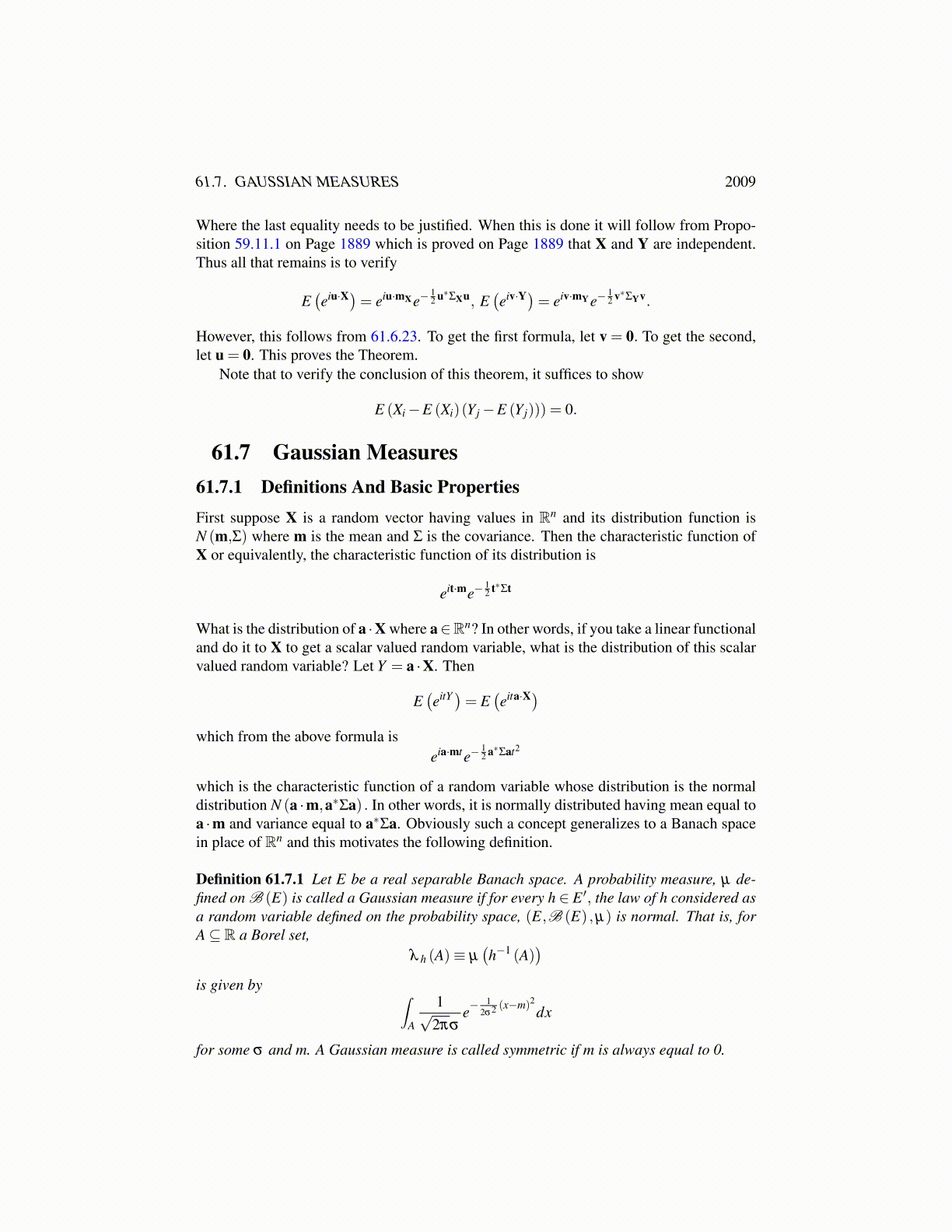
61.6. THE MULTIVARIATE NORMAL DISTRIBUTION 2009
Proof: Let ξ ,ζ be independent random variables with L (ξ ) = L (ζ ) = ν and when-ever α2 +β
2 = 1 it follows L (αξ +βζ ) = ν .By independence of ξ and ζ ,
φ ν (t) ≡ φ αξ+αζ (t)
= E(
eit(αξ+βζ ))
= E(
eitαξ
)E(
eitβζ
)= φ ξ (αt)φ ζ (β t)
≡ φ ν (αt)φ ν (β t)
In simpler terms and suppressing the subscript,
φ (t) = φ (cos(θ) t)φ (sin(θ) t) . (61.6.21)
Since ν is a probability measure, φ (0) = 1. Also, letting θ = π/4, this yields
φ (t) = φ
(√2
2t
)2
(61.6.22)
and so if φ has real values, then φ (t)≥ 0.Next I will show φ is real. To do this, it follows from the definition of φ ν ,
φ ν (−t)≡∫R
e−itxdν =∫R
eitxdν = φ ν (t).
Then letting θ = π,φ (t) = φ (−t) ·φ (0) = φ (−t) = φ (t)
showing φ has real values. It is positive near 0 because φ (0) = 1 and φ is a continuousfunction of t thanks to the dominated convergence theorem. However, this and 61.6.22 im-plies it is positive everywhere. Here is why. If not, let tm be the smallest positive value of twhere φ (t) = 0. Then tm > 0 by continuity. Now from 61.6.22, an immediate contradictionresults. Therefore, φ (t)> 0 for all t > 0. Similar reasoning yields the same conclusion fort < 0.
Next note that φ (t) = φ (−t) also implies φ depends only on |t| because it takes thesame value for t as for −t. More simply, φ depends only on t2. Thus one can define a newfunction of the form φ (t) = f
(t2)
and 61.6.21 implies the following for α ∈ [0,1] .
f(t2)= f
(α
2t2) f((
1−α2) t2) .
Taking ln of both sides, one obtains the following.
ln f(t2)= ln f
(α
2t2)+ ln f((
1−α2) t2) .
Now let x,y ≥ 0. Then choose t such that t2 = x+ y. Then for some α ∈ [0,1] , x = α2t2
and so y = t2(1−α2
). Thus for x,y≥ 0,
ln f (x+ y) = ln f (x)+ ln f (y) .